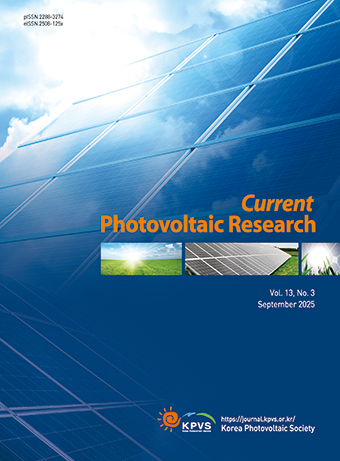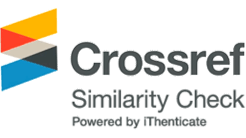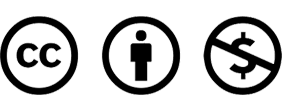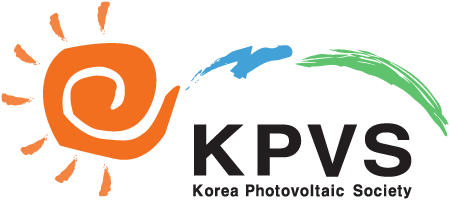-
- Tailoring ZnO Electron Transport Layer with Triarylamine-Polysilazane-Based Interlayer for Efficient Small and Large Area Polymer Solar Cells
- Muhammad Jahankhan, Sabeen Zahra, Du Hyeon Ryu, Chang Eun Song, Hang Ken Lee, Sang Kyu Lee, Seungjin Lee, Won Suk Shin
- This paper provides a novel approach to improve the performance of polymer solar cells (PSCs) by modifying the zinc oxide (ZnO) electron …
- This paper provides a novel approach to improve the performance of polymer solar cells (PSCs) by modifying the zinc oxide (ZnO) electron transport layer (ETL) through the introduction of a poly(triarylamine-polysilazane) (P(TAA-PSZ)) interlayer. This interlayer achieves key progresses in device performance. First of all, it lowers the surface energy of the ZnO ETL, leading to better adhesion between the hydrophobic active layer and the ZnO ETL. This modification effectively suppresses trap-assisted recombination and enhances charge transport/collection efficiency. As a result, the power conversion efficiency (PCE) of PSCs increases significantly, improving from 14.26% with the reference interlayer to 16.31% with the modified interlayer. Moreover, the robustness of the interlayer ensures its applicability to large-area sub-module fabrication, making it a promising candidate for scalable photovoltaic technologies. These findings demonstrate the potential of amine-based crosslinked interlayers to optimize the performance of PSCs and contribute to efficient solar energy harvesting. - COLLAPSE

-
-
The Passivation Effect on Perovskite Solar Cells Using Single-Molecular Additives with Double Carboxylic Ester Groups
이중 카르복실 에스터기를 가지는 단분자 첨가제를 이용한 페로브스카이트 태양전지에 대한 부동퇴화 효과 연구
-
Jeong-Seok Nam, Kanghyeok Lee, Mina Kim, Ying Tian, Il Jeon
남정석, 이강혁, 김민아, TianYing, 전일
- In this study, a di-carboxylic ester additive with a symmetric structure was introduced into perovskite solar cells, and the resulting changes in …
- In this study, a di-carboxylic ester additive with a symmetric structure was introduced into perovskite solar cells, and the resulting changes in the optoelectronic properties of the devices were investigated. NMR and DFT analyses revealed that the synthesized additive possesses a nonpolar benzene ring, which is expected to facilitate favorable stacking characteristics. Upon incorporation of this additive, PCE of the devices improved from 10.48% to 11.66%. However, FF decreased from 68.27% to 64.37%. Further analyses, including dark current measurements, light-intensity–dependent current–voltage characteristics, and SCLC fitting, indicated that the additive effectively reduces trap states not only in the perovskite absorber layer but also in the PEDOT:PSS hole transport layer. Therefore, the reduction in FF appears to be attributed not to the formation of traps but rather to a mismatch between the perovskite hole energy level and the elevated quasi-Fermi level of holes in the HTL induced by trap-state reduction. These findings suggest that the additive may exert additional effects, which warrant further investigation. - COLLAPSE

-
The Passivation Effect on Perovskite Solar Cells Using Single-Molecular Additives with Double Carboxylic Ester Groups
-
- Atomic-Level Tuning of Photo-Assisted Electrodeposited Cobalt Phosphate Cocatalyst in Tailored Electrolyte for Enhanced n-Type BiVO4 Photoanodes
- Kun Woong Lee, Dong Su Kim, Ye Sung Oh, Hyung Koun Cho
- Photoelectrochemical (PEC) water splitting is a promising green hydrogen production technology, but BiVO4-based photoanodes still face limited charge mobility and …
- Photoelectrochemical (PEC) water splitting is a promising green hydrogen production technology, but BiVO4-based photoanodes still face limited charge mobility and severe surface recombination. Here, BiVO4 thin films were precisely fabricated via a sol–gel process to optimize the trade-off between light absorption and hole diffusion length. Under neutral pH conditions, potassium phosphate buffer electrolyte exhibited low resistance and excellent oxygen evolution reaction activity, but its long-term stability remained insufficient. To address this, a CoPi cocatalyst was introduced using photo-assisted electrodeposition, promoting defect-selective and uniform CoPi growth. The resulting BiVO4/CoPi photoanode showed improved interfacial contact, achieving a high photocurrent density of 2.89 mA/cm2 and retaining 87.14% of its initial current after 10 hours. This study demonstrates a PEC photoanode design strategy that leverages synergistic interactions among the electrolyte, cocatalyst, and semiconductor, offering a promising approach for efficient and durable PEC water splitting systems capable of self-driven hydrogen production under real-world conditions. - COLLAPSE

-
-
Charging and Dis-charging Characteristics of a Self-sustained Power Source Integrated with a Photovoltaic Device and a Secondary Battery
태양전지와 이차전지로 집적한 자가구동형 융합전원의 충전 및 방전 특성 연구
-
Jeha Kim
김제하
- The growing demand for next-generation renewable energy services highlights the need for self-powered hybrid power technologies that integrate photovoltaic (PV) energy generation …
- The growing demand for next-generation renewable energy services highlights the need for self-powered hybrid power technologies that integrate photovoltaic (PV) energy generation with secondary battery (BAT) storage. This study presents the development of a PV-BAT hybrid power source by integrating a 2 (series) × 2 (parallel) PV module composed of four GaInP/GaAs/Ge solar cells and a lithium iron phosphate (LFP) BAT onto a polyimide flexible printed circuit board (PI-FPCB) platform. The PV module exhibited a power conversion efficiency (PCE) of 26.8%, while the LFP BAT had a full-charge voltage of 4.0 V. To ensure efficient charging, the PV module’s charging voltage (Vf) was set below the maximum power voltage (Vm), specifically at ≤ 0.8 VOC. The PV module maintained a stable photocurrent (IPV ≅ 24 mA) within the charging voltage range. The power conversion and storage efficiency (PSE) of the PV-BAT device was calculated to be approximately 22.0%. Outdoor charge–discharge tests revealed that the charging current was significantly influenced by solar movement and fluctuating irradiance conditions, resulting in extended solar charging durations—afternoon charging time increased by more than 40% compared to the midday value of 50 minutes. These findings underscore the importance of matching PV module characteristics with battery specifications to optimize hybrid energy systems for autonomous operation. - COLLAPSE

-
Charging and Dis-charging Characteristics of a Self-sustained Power Source Integrated with a Photovoltaic Device and a Secondary Battery
-
-
2D CFD Simulation Based Analysis of Wind Pressure Variations on Vertical PV Structures Considering Layout and Panel Gap under Frontal Wind
2차원 CFD 유동해석 기반 수직형 태양광 구조물의 배치간격 및 패널 틈새크기에 따른 정면풍에 대한 풍압 변화 분석
-
So Yeong Roh, Byoung Jun Lee, Si Young Kwak
노소영, 이병준, 곽시영
- This study employs 2D CFD simulations to analyze wind pressure characteristics on vertically arranged bifacial photovoltaic modules. The effects of panel spacing …
- This study employs 2D CFD simulations to analyze wind pressure characteristics on vertically arranged bifacial photovoltaic modules. The effects of panel spacing and assembly gap size on flow behavior and wind load distribution were investigated. Results show that net wind pressure decreased by 80–90% from the second row onward, regardless of spacing. When the spacing was close to the panel height (3.5 m), pressure reduction remained stable (~86%) in the second and third rows, while larger spacing (6 m) caused sequential load reduction due to wake reattachment. Horizontal gaps reduced rear negative pressure as size increased, whereas vertical gaps slightly increased it. These findings indicate that applying a uniform conservative wind load coefficient to all panels may lead to structural and economic inefficiencies. - COLLAPSE

-
2D CFD Simulation Based Analysis of Wind Pressure Variations on Vertical PV Structures Considering Layout and Panel Gap under Frontal Wind
-
-
A Study on Improving Feasibility Studies for the Expansion of Solar Power Plant ODA Projects: Focusing on the Tunisia Case
태양광 발전소 ODA 사업 확대를 위한 타당성 분석 사업 개선방안 연구: 튀니지 사업 사례를 중심으로
-
Min Ju Kwak, Keun Kee Hong
곽민주, 홍근기
- This study evaluates the feasibility study project for a 50MW solar power plant implemented in Tunisia by KOICA from 2017 to 2019. …
- This study evaluates the feasibility study project for a 50MW solar power plant implemented in Tunisia by KOICA from 2017 to 2019. Using the OECD DAC evaluation criteria—relevance, effectiveness, efficiency, impact, sustainability, and coherence—the study assesses project performance and highlights challenges in translating feasibility results to actual implementation. The analysis found that the project produced high-quality outputs and supported the enhancement of local technical capacity; however, its effectiveness was limited due to a lack of flexibility in responding to changes in national policies. Based on this case, the study proposes improvements for future projects, including adaptive project design, enhanced linkage to financing mechanisms, clearer institutional roles, and post-project monitoring systems. These recommendations aim to ensure that solar feasibility studies contribute not only to pre-investment planning but also to long-term renewable energy deployment in developing countries. The findings are particularly relevant as demand for solar infrastructure and technical cooperation continues to grow globally. - COLLAPSE

-
A Study on Improving Feasibility Studies for the Expansion of Solar Power Plant ODA Projects: Focusing on the Tunisia Case



 Current Photovoltaic Research
Current Photovoltaic Research







